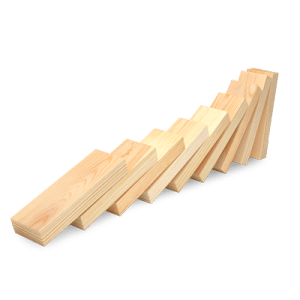Outdoor energy transformation hunt
Searching for energy inputs and outputs in the great outdoors.

Overview
Energy transformations are all around us. Let’s get outside to discover examples of energy being transformed and identify the inputs and outputs.
Instructions
What you'll need
- Clipboards and pencils
- “Outdoor energy transformation hunt” worksheet for each pair of students
Energy transformations happen when one form of energy (energy input) is changed to another form of energy (energy output).
For example, a lamp changes electrical energy to light energy. Your body changes the chemical energy from food to kinetic energy or motion as you run around.
- Brainstorm ideas of what energy transformations might be found outside. Can they think of energy transformations in nature and around the school grounds?
- Review the worksheet.
- Now head outside. Using the worksheets, have partners record the energy inputs and outputs for each energy transformation they can spot.
- Regroup and take turns sharing examples of what they saw and what surprised them.
- Do students have any questions about energy transformations?
Modify or extend this activity
Extensions
- Have students find examples of energy transformations at home to share in class.
- Go on a field trip to a local park to find examples of energy transformations in nature.
Curriculum Fit
Grade 4 Science
Content
- Energy has various forms and is conserved
Curricular Competencies
Questioning and predicting
- Demonstrate curiosity about the natural world
- Observe objects and events in familiar contexts
Planning and conducting
- Make observations about living and non-living things in the local environment
Processing and analyzing data and information
- Experience and interpret the local environment
- Sort and classify data and information using drawings or provided tables
Assessments
- Use the worksheet to assess students’ ability to make observations and their understanding of energy transformations.
- Assess participation during the discussion.
Teaching Notes
What is energy?
Energy is the ability or capacity to do work. Energy makes change possible. It is the power or ability to make things happen.
Forms of energy
Energy is all around us. The 10 forms of energy are listed below:
- Electrical energy is produced by the flow of an electric charge. We see or hear the result of this energy as something that turns on, lights up or gets warmer.
- Light energy travels in waves and is visible to us. Light energy is produced by sources such as the sun, fire or light bulbs.
- Sound energy is produced by vibrating objects and travels as sound waves. We hear sound energy in music, birds singing or a fireworks display.
- Thermal (heat) energy is produced by a number of sources such as the sun, a campfire and the oven. We feel this energy as warmth.
- Nuclear energy is stored in the nucleus of an atom and can be released when a heavy nucleus is split into two lighter nuclei (fission) or when two light nuclei join together into one bigger nucleus (fusion). The sun generates its energy through nuclear fusion. This energy can also be released to generate electricity.
- Elastic energy is stored in objects that can be stretched or compressed. We feel the tension when things bounce or are stretched.
- Chemical energy is stored in the bonds of molecules. Chemical energy can be found in food, a battery, gasoline and wood. When the energy is released it transforms into another form of energy. The chemical energy in a battery can be transformed into light energy in a flashlight.
- Magnetic energy is stored within a magnetic field and causes metals to attract or repel each other.
- Kinetic energy is the energy of motion. We can see this energy as things move and change position such as a skateboarder, a skier going downhill or a person walking.
- Gravitational energy is stored in an object due to its height and is caused by the pull of gravity. We see the result of this energy when something falls or feel it when we are jumping off a diving board.
The law of conservation of energy
The law of conservation of energy states that energy cannot be created or destroyed but can be changed. When something happens, energy is transformed from one form to another. The energy input is the energy that goes into an object or system and the energy output is the energy that comes out. For example, electrical energy is the energy input to a lamp and light energy is the output. Depending on the light bulb used, thermal/heat energy may also be an energy output.







